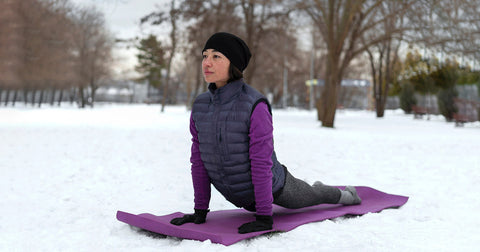As the days grow shorter and the temperatures drop, many people start to experience symptoms of Seasonal Affective Disorder (SAD). This form of depression typically occurs during the fall and winter months when exposure to natural sunlight is limited. The good news is that there are natural ways to combat the winter blues and improve mood and energy levels.
Understanding SAD and Its Symptoms
SAD is a type of depression that is triggered by the change in seasons. Common symptoms include:
- Low energy
- Difficulty concentrating
- Feelings of hopelessness or sadness
- Sleeping more than usual
- Weight gain and carbohydrate cravings
Light Therapy for SAD
Light therapy is one of the most effective treatments for SAD. Using a lightbox that mimics natural sunlight for 20-30 minutes a day can help regulate your body's circadian rhythm and improve mood. Be sure to choose a lightbox that provides 10,000 lux of light and consult with a healthcare provider before starting light therapy.
Supplements for Managing SAD
- Vitamin D: Known as the "sunshine vitamin," Vitamin D plays a crucial role in mood regulation. Since we get less sunlight in the winter, supplementation is often necessary.
- Omega-3 Fatty Acids: These healthy fats support brain function and have been shown to alleviate symptoms of depression, including SAD.
- St. John’s Wort: An herbal supplement that has been used to treat mild to moderate depression. However, it can interact with certain medications, so consult a doctor before use.
-
Magnesium: Aids in relaxation and may help with feelings of anxiety or depression.
Stay Active and Mindful
Regular physical activity can reduce symptoms of depression and improve overall mood. Even a short daily walk can help. Additionally, practices like mindfulness, meditation, and journaling are powerful tools for managing negative thoughts and emotions.
By taking a proactive approach and incorporating light therapy, supplements, and positive lifestyle changes, you can mitigate the effects of SAD and maintain your mental well-being during the colder months.



